The Department of Home Affairs has released temporary visa data for Q1 2025, showing a record 2,541,651 temporary visas on issue in Australia (excluding visitors).
This figure was around 120,000 higher than the year prior and about 580,000 higher than Q1 2020, before the pandemic.
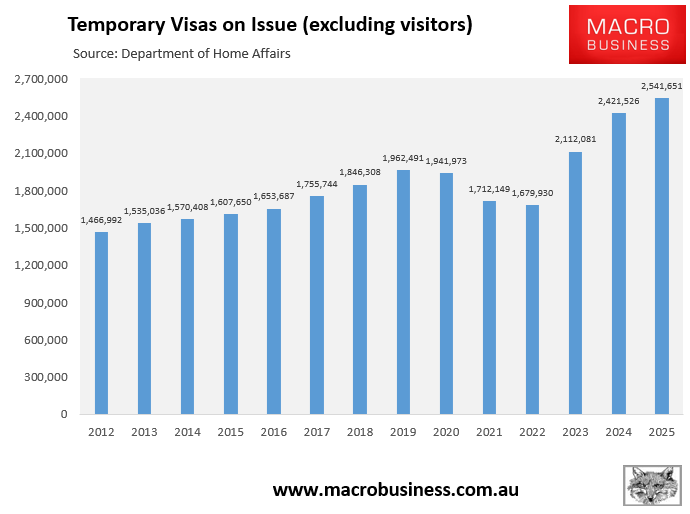
As illustrated below, the surge in temporary visas since Q1 2019 has been driven by bridging visas (~177,900) and graduate visas (~141,400).
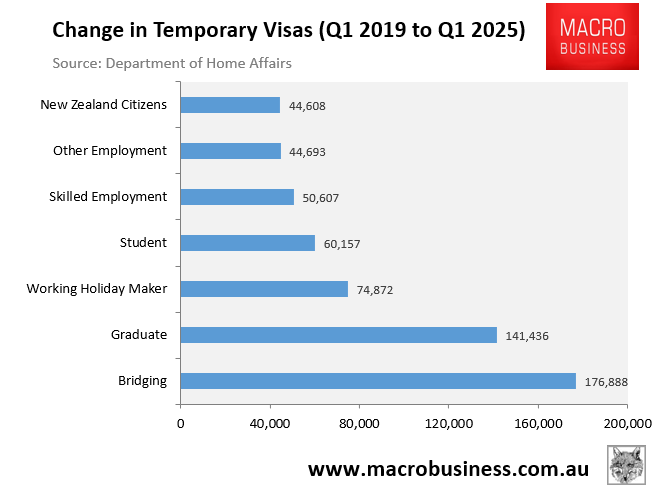
As explained on Friday, a record 222,190 graduate visas were on issue of Q1 2025, driven by students from South Asian nations.
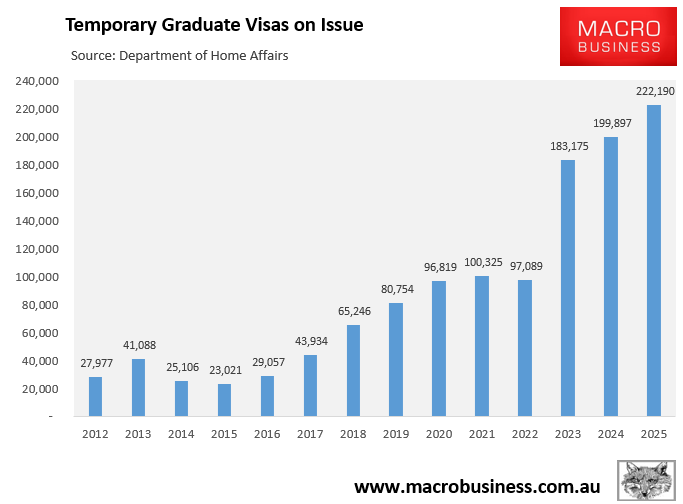
South Asian students tend to covet Australia’s generous work rights and permanent residency above education quality.
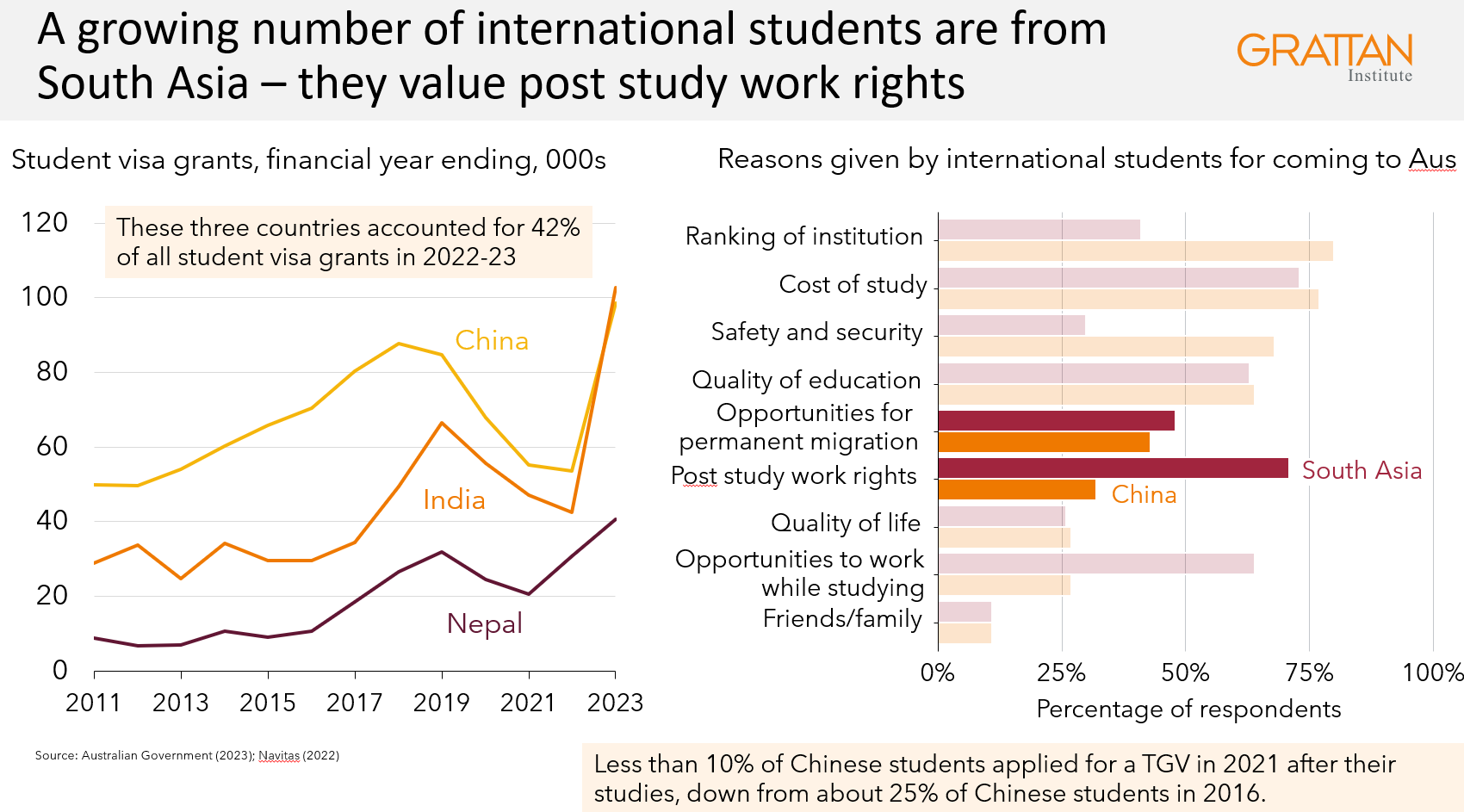
Moreover, one in five graduate (485) visas on issue are for the spouses or children of primary visa holders, driven by students from South Asia.

Higher education expert Andrew Norton warned that it was “very likely” that some groups (e.g., South Asians) were exploiting the graduate visa program by bringing their family members to access the job market en route to permanent residency.
Norton also forecasts that the number of graduate visas (including family members) from South Asian nations will surge following the lift in students from those nations after the pandemic.
The blowout in bridging visas, which hit a record high of 379,800 in Q1 2025, is driven by former students refusing to return home.
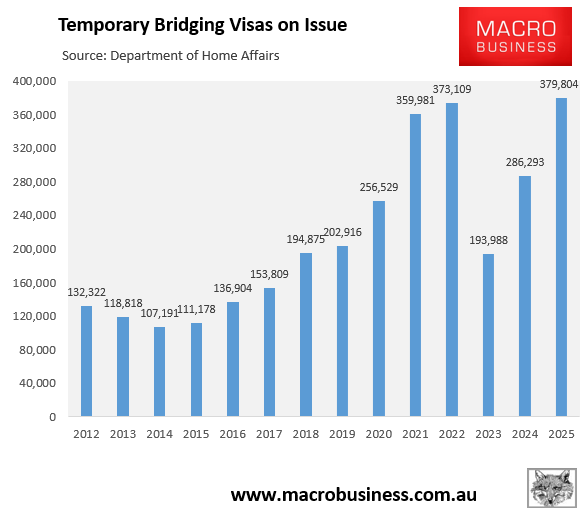
According to former immigration department bureaucrat Abul Rizvi, there were 109,122 onshore applicants for bridging visas from student visa holders at the end of December 2024, which has increased from a low of 15,065 at the end of December 2022.
“With a surge of onshore student applications in February/March 2025, the student portion of the bridging visa backlog is likely to rise in April/May”, stated Rizvi.
“Note this means the overall number of students in Australia would now be approaching 850,000. Note that students are now increasingly on BVs while they appeal refusal of their onshore student visa application to the Administrative Review Tribunal”.
Abuse of the bridging visa system has been a long-running problem in Australia, as acknowledged in 2022 by former High Court Justice, Ian Callinan:
[Ian Callinan] said “almost everyone” with migration law experience had told him there were applicants and representatives who “game the system, well knowing there is an automatic entitlement to a bridging visa”…
Temporary migrants seeking to rort the system for personal gain can contact the immigration industry to set the Administrative Review Tribunal process in motion. The system then allows “temporary” visitors to extend their stays for years, allowing them to work and possibly transition to permanent residency.
The number of student visas on issue was also a record high 672,982 in Q1 2025, marginally above Q1 2024 and about 60,000 higher than the pre-pandemic peak in Q1 2019.
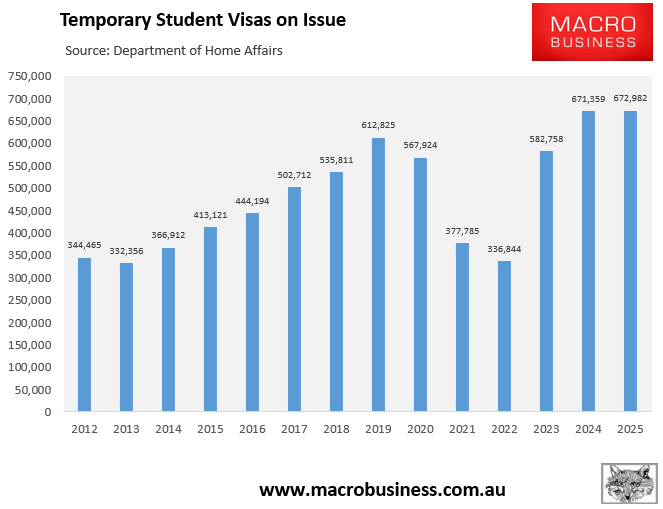
While the number of student visas has plateaued, the number of graduate and bridging visas obtained by former students has exploded.
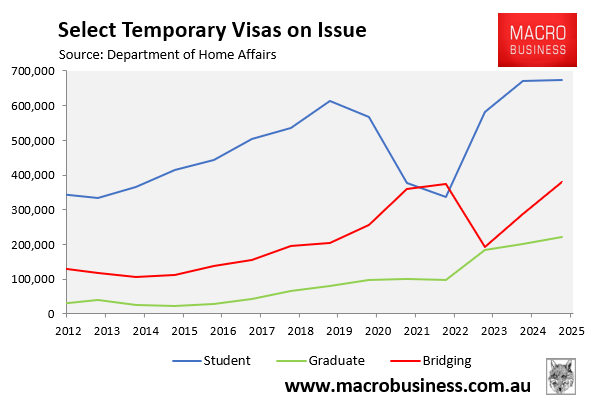
The Albanese government must stem the growth in student and graduate visas by aiming for quality over quantity via the following types of policy reforms:
- Increase English-language proficiency criteria and require prospective students to pass entrance exams before applying for a study visa.
- Significantly increase financial requirements, including requiring students to deposit money in an escrow account before coming to Australia.
- Limit the hours overseas students can work and reduce the direct relationship between studying, working, and acquiring permanent residency.
- Close down the numerous shady private colleges that operate as visa mills.
- Allow only distinction-level or higher international graduates to get post-study 485 visas.
- Allow only postgraduate overseas students to bring family members.
- Increase the temporary skilled migration income threshold to more than the median full-time earnings (now around $95,000).
The Albanese government must also tighten up the appeals process for the Administrative Review Tribunal.
These reforms would drastically lower the number of overseas students, graduates, and bridging visa holders while increasing the average quality and productivity of the migration system.

